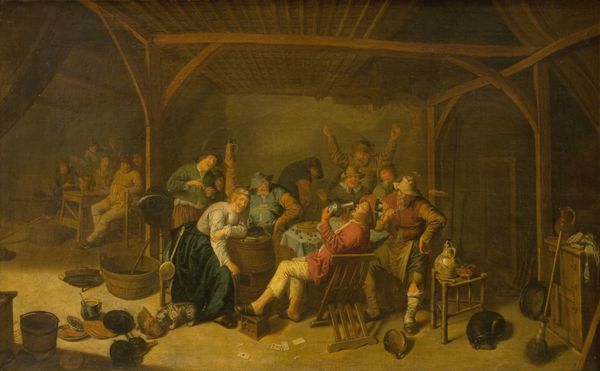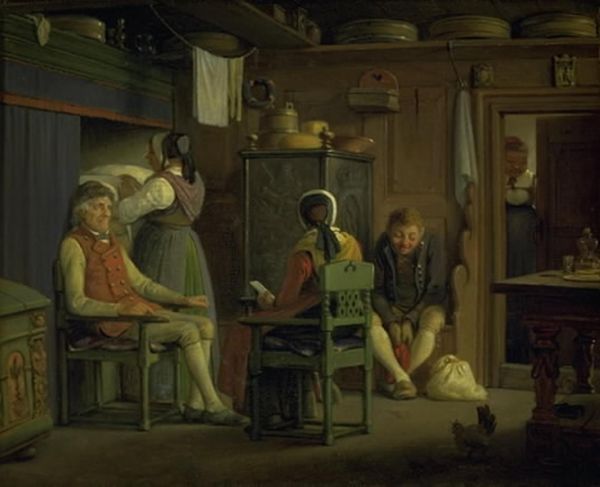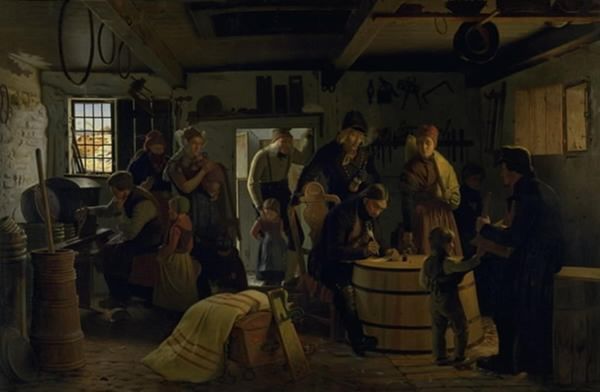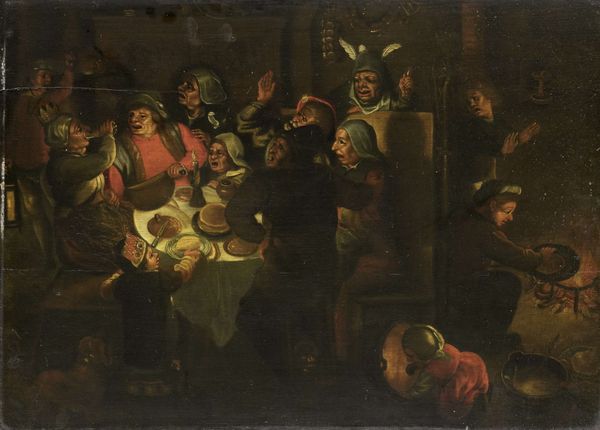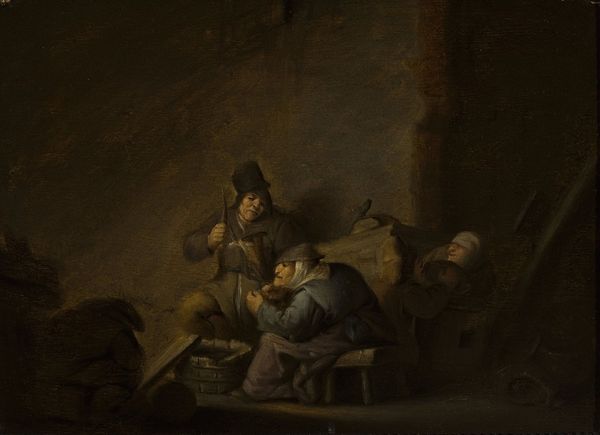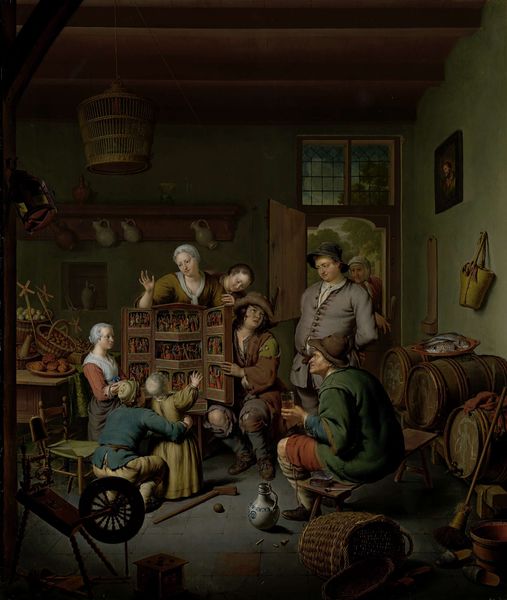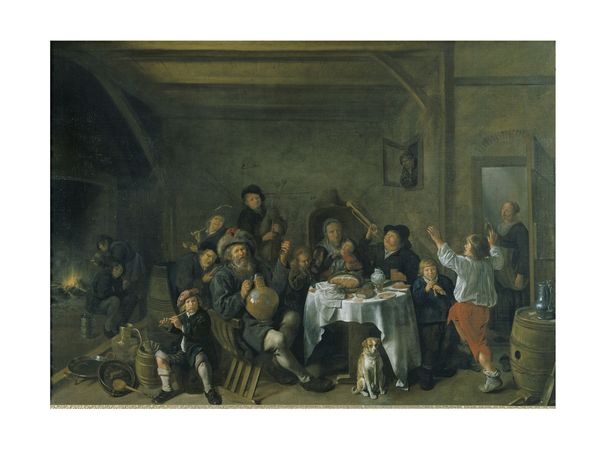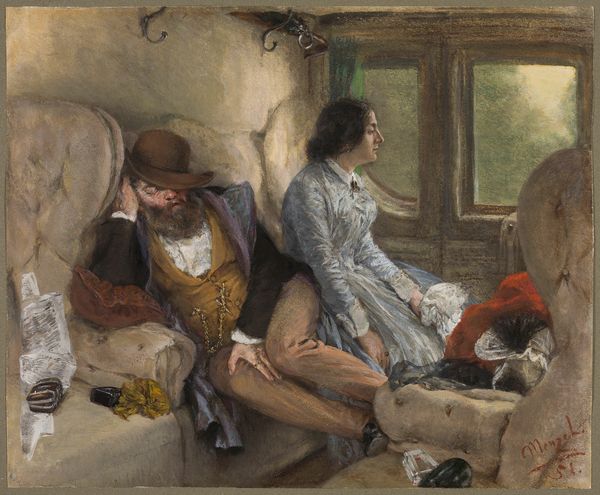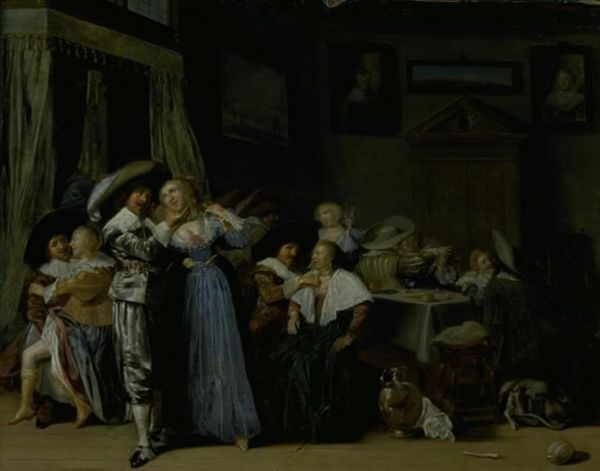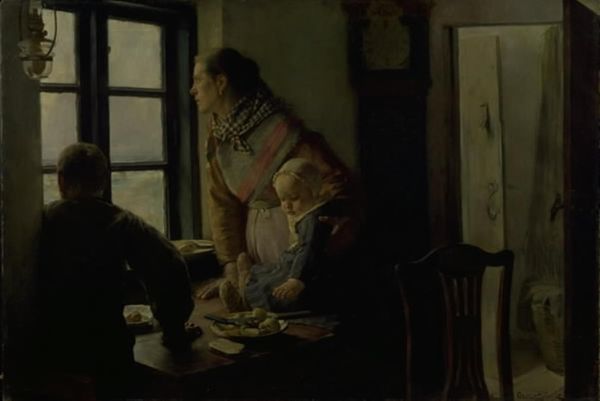
painting, canvas
#
painting
#
impressionism
#
canvas
#
genre-painting
#
realism
Dimensions: 75 cm (height) x 107 cm (width) (Netto)
Editor: So, this is Julius Exner’s “In a Third Class Railway Carriage,” painted in 1890. It's currently housed at the SMK in Copenhagen, painted in oils on canvas. It's… claustrophobic. All these people crammed together. What do you make of this intimate setting and the different people captured in this public space? Curator: It's a compelling snapshot of social dynamics, isn't it? The painting presents a fascinating interplay of social classes in the context of late 19th-century Danish society. The third-class railway carriage signifies a space where people from different walks of life are temporarily brought together. It serves as a microcosm of society. Editor: So, beyond just representing a space, are you suggesting it actually comments on society and power structures of the time? Curator: Precisely. Consider the varied attire and expressions. There's a hierarchy implicitly displayed, and that comes through not just visually but politically. Are there people in this space who have a different relation to power or authority than others? Do they seem aware of that relationship? Think about where this painting would have been exhibited – what kind of audience would have encountered it and how might it have resonated with them? The museum is part of the picture here too. Editor: So, it's not just documenting a scene, it's actively participating in a conversation about class. And by showing this scene publicly in a museum, its meaning changes? I never thought of a genre painting having so much to do with political messaging and who’s in the audience! Curator: Indeed. Reflecting on these socio-political contexts really unlocks a new layer of understanding in seemingly simple genre scenes. This reveals how representations within a shared social space can also communicate cultural narratives.
Comments
No comments
Be the first to comment and join the conversation on the ultimate creative platform.
